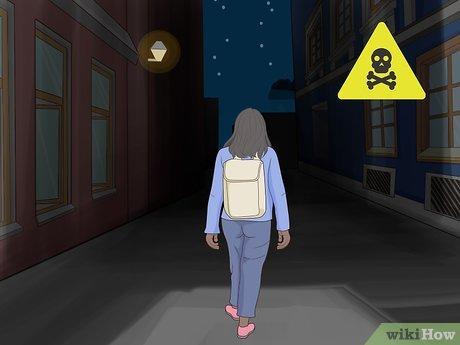Table of Contents
- Choosing Well Lit and Populated Routes for Maximum Safety
- Staying Alert and Minimizing Distractions While Walking
- Using Technology and Safety Apps to Enhance Personal Security
- Carrying and Using Personal Safety Devices Effectively
- In Retrospect
Choosing Well Lit and Populated Routes for Maximum Safety
When navigating alone after dark, prioritizing well-lit streets and commonly traveled paths significantly reduces potential risks. Bright, illuminated routes deter unwanted attention and provide clear visibility, allowing you to anticipate surroundings and spot any unusual activity from a safe distance. Choosing streets with consistent lighting isn’t just about seeing-it’s about being seen, which can discourage anyone with ill intent. Remember, shadows and dark corners can hide hazards, so sticking to areas where the street lamps shine strong is a smart safety move.
Additionally, paths frequented by other pedestrians or located near open businesses add an extra layer of security. A route popular with nightlife, joggers, or late workers ensures there are “eyes on the street,” which reduces vulnerability. When planning your walk, consider the following:
- Stick to main roads and avoid shortcuts that cut through isolated areas.
- Use streets where foot traffic is consistent, especially in commercial zones.
- Give preference to routes near emergency services or open establishments.
- Avoid parks, alleys, and dark parking lots that can become blind spots.
Staying Alert and Minimizing Distractions While Walking
Maintaining sharp awareness of your surroundings is crucial whenever you’re walking alone, especially at night. Distractions like scrolling through your phone or wearing headphones can significantly reduce your ability to notice potential hazards or approaching individuals. Instead, keep your phone tucked away unless absolutely necessary and use this opportunity to engage all your senses. Trust your intuition-if something or someone feels off, it’s important to react promptly by creating distance or seeking a well-lit, populated area.
Adopting small habits can make a big difference in staying alert. Consider these practical tips:
- Keep your head up: Scan the environment periodically instead of fixating on your path.
- Limit headphone volume: If you must listen to music or podcasts, keep the volume low enough to hear what’s happening around you.
- Stay on main routes: Walk where there is good lighting and frequent foot traffic to discourage unwanted attention.
- Avoid sudden distractions: Refrain from deep phone conversations or texting that split your focus.
Using Technology and Safety Apps to Enhance Personal Security
Embracing technology can significantly boost your confidence and security during solo nighttime walks. Numerous safety apps are tailored to your protection, featuring functionalities such as real-time location sharing, emergency SOS alerts, and one-touch calls to trusted contacts or authorities. Many apps also include options for discreetly recording video or audio, providing an extra layer of evidence should an incident occur. Integrating these tools into your routine ensures that help is never more than a tap away, transforming your smartphone into a powerful personal safety device.
To maximize the effectiveness of these digital tools, consider setting up a designated safety circle of family and friends who can monitor your progress. Activate features like scheduled check-ins or geo-fencing, which notify selected contacts if you deviate from your planned route or fail to check in within a pre-set time frame. Additionally, make it a habit to keep your phone fully charged and easily accessible. Simple precautions like using headphones that allow ambient sounds and enabling flashlight functions can also enhance situational awareness and preparedness.
Carrying and Using Personal Safety Devices Effectively
In Retrospect
Staying safe while walking alone at night is all about preparation and awareness. By following these top tips – from planning your route and staying visible to trusting your instincts and keeping your devices handy – you can significantly reduce risks and feel more confident on your nighttime journeys. Remember, safety is always your priority, so take the time to practice these habits and stay vigilant. Walking alone after dark doesn’t have to be daunting; with the right precautions, it can be a secure and even empowering experience. Stay safe out there!Check Our Other Blogs
- StunGun – Your Trusted Source for Stun Guns, Laws, and Self-Defense Tips
- PepperSprayLaws – Your Trusted Resource for Pepper Spray Information
- StunGunLaws – Your Trusted Guide to Stun Gun Legality and Safety



